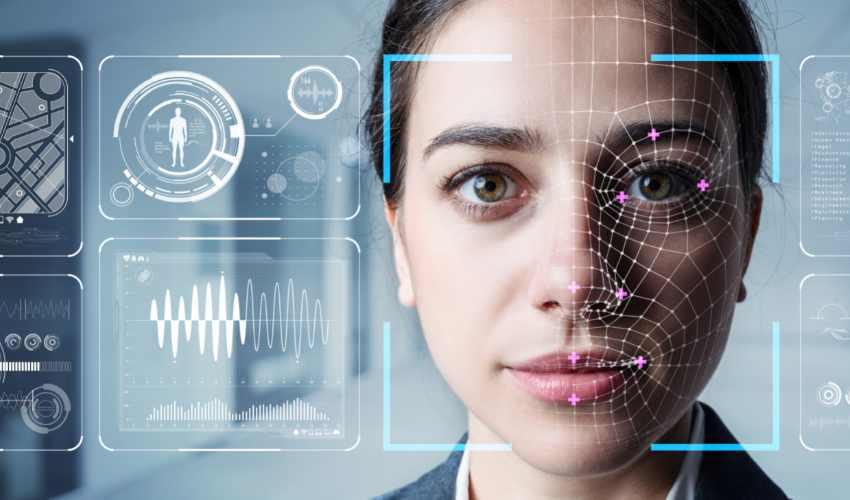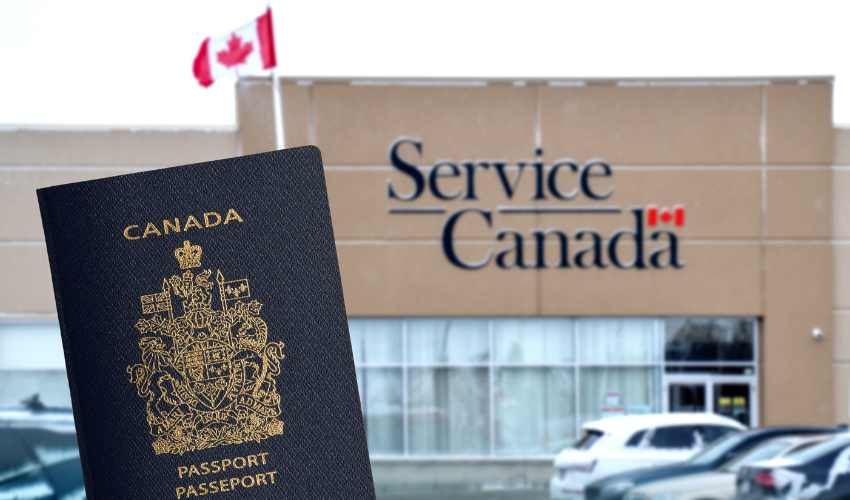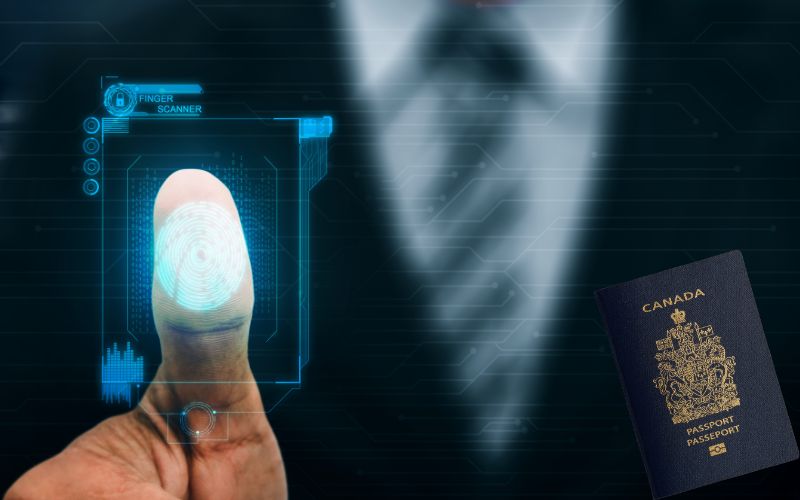Biometrics Canada For Visa Application – A Step-by-Step Guide
biometrics Canada has requested from most foreign nationals seeking a tourist visa (visitor visa), a study permit (Student Visa) or work permit (Work Visa), or permanent residence abroad since December 31, 2018.
All international travellers between the ages of 14 and 79 who apply, claim, or request temporary residence (apart from the US citizens), permanent residence, or refugee protection must submit biometrics. There are still some exceptions and interim measures for collecting biometric data for specific circumstances.
Who needs to give biometrics?
Whether applying from within Canada for permanent residency, as a foreign worker (including extending a work permit), international student (including study permit extension), or as a visitor needing a Canada visitor visa including extending their stay, foreign individuals between the ages of 14 and 79 must provide their biometrics (fingerprints and photo). The following people must disclose their biometrics Canada.
Temporary residence applicants who are applying for:
- A visa for a temporary resident (TRV )
- An extension of permission to be temporarily resident in Canada.
- A visa for temporary residence (TRP)
- A renewal of the status of a temporary resident
- A work permit or a work permit renewal
- A new study permit or one that has been renewed
Permanent residence applicants who are applying for:
- A visa for permanent residents.
- A request to become a permanent resident of Canada.
- They would get a new permanent residence card for the first time if they weren’t required to enrol in biometrics because they were under 14 when they applied.
Refugee protection claimants who are applying for:
- A request for asylum in Canada (no upper age limit)
- A request for international refugee resettling

Who can exempt give biometrics Canada?
- Demands made by applicants
- Candidates must be at least 14 years old or at least 79 years old.
- Any member of the Royal Family, including Her Majesty Queen Elizabeth II, the Queen of Canada.
- U.S. citizens and people with green cards
- State leader, diplomat, or representative
- U.S. transit: Anyone with a current nonimmigrant visa for the U.S. who wish to travel directly to or from Canada for less than 48 hours and who apply for a TRV.
- Foreign nationals without visas who want to enter or stay in Canada as tourists need electronic travel authorization.
- Applications or requests for temporary residency made concurrently: When submitting more than one application or request, a candidate needs only provide their biometric data once.
- 1 in 10: TRV candidates are exempt from the requirement to submit biometrics Canada taken within ten years of the applicant’s previous biometric enrollment.
- Foreign nationals who have already given their biometrics in support of a PR application are exempt from the requirement to do so again in support of a TRV.
- Armed services personnel who are exempt from the TRV and passport requirements and who request a TRV to travel to Canada under the Visiting Forces Act.
- Impossible or not feasible: If it is judged that the collection of biometric information is impossible or not practicable, the IRCC officers have the authority to exempt applicants from giving one or both pieces of biometric data.
There are currently interim procedures for the biometrics collection from specific temporary or permanent residency applicants and refugees in exceptional circumstances.
When does IRCC ask for biometrics?
Only when you apply to IRCC for any immigration stream can you provide your biometrics? For instance, before IRCC begins processing your application for a visitor visa, study permit, or work permit, you must provide your biometrics. Read your instruction manual for information on how to apply and when to provide your biometrics Canada.

Where to give your biometrics Canada?
- Designated Service Canada offices
- Visa Application Centres (vfs Canada biometric appointment) and U.S. application support centers (ASCs)
Steps to giving your biometrics.
1-Pay the biometric fee
To avoid delays, the biometric fee must be paid when you submit your application.
2-Get the biometric instruction letter
After paying the biometric charge, you’ll receive a letter confirming that you must provide your biometrics and outlining the appropriate locations. While delivering your biometrics, you must carry this letter with you. It would help if you also had a current passport with you.
3-Go to an official biometric collection site
Your biometrics Canada must be provided in person. You must schedule a time to deliver your biometrics. Make a Biometrics Canada appointment when you receive your letter with biometric instructions. You’ll need to bring documents required for biometric Canada as below to provide your biometrics.
- Biometric instruction letter Canada.
- A confirmation email for your biometrics Canada visa appointment.
- You submitted a legitimate travel document with your application, like your passport.
The biometrics Canada fees
An additional $85 per person biometric fee will be charged in addition to the usual visa application fee. Families must only pay a maximum biometric fee of $170 when applying for a visiting visa together.
Whether you apply online or in person, the Visa Application Centre (VAC) employees will require identification before capturing your fingerprints and taking your picture. Your biometric fee will also pay for processing your application at a VAC.
How do I pay for biometrics once my application has been submitted?
To pay your biometrics cost after submitting your application:
- If you submitted your application, pay online and uploaded your receipt to your IRCC account, or used our website,
- If you submitted a paper application, pay online, and upload your official receipt via the IRCC website.
After biometrics what is next for Canada?
When your application is complete, the VAC will send it to the visa office and notify you when it has been received.
What happens when you arrive in Canada ?
The primary inspection kiosk will automatically examine your fingerprints at any Canadian airport or land border. The system will verify your identity by comparing it to the data gathered when you submitted your application. If the officer sends you for a secondary inspection, a border services officer (CBSA) may check your fingerprints using biometric verification equipment.

Biometrics Canada FAQs
What if I already provided biometrics?
Your biometrics are valid for ten years if you previously submitted them for a visitor visa, study permit, or work permit application. Until the 10-year window closes, you are exempt from providing your biometric information when applying for a visitor visa, work permit, or study permit. But, until your application is accepted, you must submit your biometrics each time you apply for permanent residency.
Who needs to complete biometrics?
Foreign nationals must provide their biometrics when applying for a visitor visa, a work or study permit (again, barring US citizens), permanent residency, or refugee or asylum status.
What is biometrics Canada age limit?
- All asylum seekers who are 14 years old or older must provide biometric data (no upper age limit).
- Applicants younger than 14 or older than 79 are excused from supplying biometric information in all other circumstances.
Does everyone need biometrics?
IRCC Canada will require you to attend a Biometrics Canada appointment whether you are requesting a Canada PR card through adjustment of status, naturalization, asylum, or one of several other immigration pathways.
Why does IRCC ask for biometrics?
Canadian visa officers use biometrics to verify your identification. Moreover, biometrics aids in solving issues or errors that may arise if your name, date of birth, or place of birth are similar to another person’s, making it harder for someone to fabricate, steal, or use your identity.
When is biometrics required for Canada PR?
Once every ten years, you must provide your biometrics Canada. You will only have to provide your biometrics once more once the 10-year window has passed. You don’t need to provide biometrics again if you previously provided them as part of an application for a visitor visa, work permit, or study permit; they are still valid.
When did biometrics become mandatory?
Biometrics are used in more than 70 nations’ immigration policies. Since 2013, applicants from 29 visa-required countries and one territory have been obliged to provide biometrics to support their applications for temporary residence visas, work permits, or study permits.
Can a visa be approved without biometrics?
Your visa application will only be processed with biometric data. Both your face and fingerprints will be scanned. A digital fingerprint scanner will gather all ten fingers’ worth of images, and a digital snapshot will also be taken. This method is rapid, discrete, and unobtrusive.
Do I need biometrics for PR card renewal?
Biometrics. After submitting your application, IRCC will receive a biometric instructions letter (BIL) with a list of possible locations for biometric collecting services. Unless they were previously excluded, most PR card applicants are not required to provide biometrics.
Is it normal for CIC Canada to ask for fingerprints for citizenship?
Often, fingerprinting or other biometric testing is optional while seeking Canadian citizenship. Yet occasionally, the IRCC (Immigration, Refugees and Citizenship Canada) will send a letter requesting your fingerprints.
How long does CIC take to process biometrics?
IRCC Canada can begin processing your application for a study permit as soon as IRCC has your biometrics. If you match the qualifying requirements, IRCC typically processes Student Direct Stream applications within 20 calendar days of receiving your biometrics Canada.
Why does CIC Canada ask for fingerprints for citizenship again?
IRCC Canada can provide a few possible justifications for the request for fingerprints. They consist of quality control (QA), Having a name and birthdate that are identical to those of another citizen or permanent resident (especially if that person had a citizenship application that was rejected)
Is biometrics the last step of Immigration Canada?
No, one of the stages you must complete before IRCC can process your application is providing your biometrics.
How long does it take to get PR approval after biometrics?
It should take roughly eight weeks to acquire your valid visa after you have submitted your biometrics to IRCC Canada with your visa application.
How much is the Canada biometrics fee?
85$ per person, 179$ per family (2 or more people). Maximum fee for a family of 2 or more people applying at the same time and place
Is biometrics done after visa application?
Once every ten years, you must submit your biometric data, whether you’re seeking a temporary resident visa (TRV), a study visa (permit), or a work visa (permit). Nonetheless, you must include your biometric data with each application requesting permanent residence.
What is the next step after biometrics for Canada PR?
When you provide your biometrics, your fingerprints and photo will be electronically encrypted and sent to a secure Government of Canada database.
How do I know if I have been given biometrics?
You might have provided biometrics when submitting a paper application to a Visa Application Center (VAC). You will receive a letter instructing you to pay the biometrics cost if you need to and are required to provide biometrics.
How long are biometrics good for?
The Biometrics Canada is valid for ten years.

Do non-accompanying dependents need biometrics?
Spouses not travelling with you don’t have to submit their biometrics. They won’t need to provide their biometrics until they apply to immigrate to Canada.
What is the next step after biometrics for a Canada spouse visa?
To obtain the Confirmation of Permanent Residency (COPR), you must meet with an immigration officer. IRCC Canada will send you a letter to set up your biometrics Canada visa appointment and inform you of the supporting documentation needed. The officer will make the final decision regarding whether to grant your family members permanent residency in Canada.
Why does Immigration Canada need my fingerprints?
Using biometrics by Canada helps aid in preventing immigration and criminal violations, notably those using falsified documents.
Does CIC Canada do a background check?
IRCC Canada uses police certificates to determine whether you have a criminal history—these aid immigration officers in deciding if you pose a security threat to Canada. If you’re requesting citizenship or permanent residency in Canada, you must obtain a police certificate.
The time it takes you to provide your biometrics is not accounted for in the processing time for applications for visitor visas, study permits, or work permits. IRCC Canada can process your application as soon as you submit your biometrics.
How long does it take to get PR after Biometrics Canada 2023?
After receiving your entire application, IRCC Canada typically handles Express Entry applications in six months or less.
What documents are required for Biometric Canada?
If a biometric instruction letter has been sent, you must bring it with you. Let’s say you require a current passport or other travel documentation. If so, you must bring one of the following documents to your Biometrics Canada appointment: a certified copy of your passport or your refugee protection claimant document (current or expired) with your photo attached.
Why does IRCC Canada ask for biometrics?
Canadian visa officers use biometrics to verify your identification. Moreover, biometrics aids in solving issues or errors that may arise if your name, date of birth, or place of birth are similar to others. It makes it harder for someone to fabricate, steal, or use your identity.
When is biometrics required for Canada PR?
Once every ten years, you must provide your biometrics. You will only have to provide your biometrics Canada once more once the 10-year window has passed. You don’t need to provide biometrics again if you previously provided them as part of an application for a visitor visa, work permit, or study permit; they are still valid.
Do I need to pay biometrics for PR?
You must submit your fingerprints and photo to apply for permanent residency (biometrics). You are temporarily excused from providing biometric information if you are applying for temporary residence or have an application pending. You can respond to various questions to determine whether you must provide biometrics.
Do I need biometrics for PR renewal?
Unless they were previously excluded, most PR card applicants are not required to provide biometrics. After submitting your PR renewal application, you will get a biometric instructions letter (BIL) with a list of possible locations for biometric collecting services.
How long do biometrics results take?
Your biometrics will enable IRCC Canada to carry out the necessary background check so that your case can be adjudicated. Typically, the Biometrics Canada appointment lasts for about 15 minutes. It usually takes 30-45 days after your fingerprints have been taken for the FBI clearances to show up in the IRCC system.
Who should do biometrics?
Foreign nationals must provide their biometrics Canada when applying for a visitor visa, a work or study permit (again, barring US citizens), permanent residency, or refugee or asylum status.
Does biometrics mean approval?
No. One of the stages you must complete before IRCC Canada can process your application is providing your biometrics.
What next after biometrics Canada?
IRCC Canada can begin processing your application for a study permit as soon as they have your biometrics. If you match the qualifying requirements, they typically process Student Direct Stream (SDS) applications within 20 calendar days of receiving your biometrics.
Do they take photos for Biometrics Canada?
IRCC Canada will use the digital photograph taken when you give your biometrics.
How long it takes to get a passport request after biometrics?
You must wait for IRCC Canada to notify you or your immigration lawyer of your visa decision on your Immigration application after providing your biometric data at the Biometric Collection Center (VAC).
How Can We Help You?
If you wish to apply for a Canada TR or PR visa, don’t hesitate to contact our Immigration firm for professional help. At Arnika Visa, we can handle your entire Canadian immigration process. By benefiting from Arnika Visa’s service packages and our Regulated Canadian Immigration Consultant (RCIC), you will not only enhance your chances of success in your Visa Application, but you will also get expert advice on your specific needs.
Our RCIC is highly qualified to assist you with your eligibility evaluation, review all your documents and application forms, and submit them to the Canadian government as your authorized representative. He has helped many clients obtain a visa after a refusal, often after multiple refusals. This is his area of expertise.



